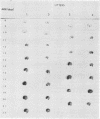Abstract
The influence of volatile fatty acids on the ecology of the bacterial flora of the mouse intestinal tract has been studied in three situations where large fluctuations in the composition of the microflora have been observed. Young mice were shown to ingest solid food particles when 11 days old; this correlated with the appearance of strictly anaerobic fusiform bacilli in the intestinal lumen and a 10,000-fold decrease in numbers of coliform bacilli. Over the same period, volatile fatty acids were shown by gas-liquid chromatography to appear in the intestinal content. It is suggested that the fusiform bacilli are responsible for the presence of the volatile acids (especially butyric acid) which exert an inhibitory effect on the coliform bacteria, resulting in the decline in numbers. When germ-free mice are placed in a specific pathogen-free mouse colony, changes in the intestinal flora occurred which were similar to those observed in the young mice approaching weaning. Once again, the decline in the coliform population correlated with the appearance of significant levels of butyric acid in the large intestine. In a further series of experiments, mice were fed penicillin and levels of the intestinal fatty acids were measured. The antibiotic eliminated the anaerobic fusiforms from the intestine, resulting in the disappearance of significant levels of butyric acid and a million-fold increase in the numbers of coliform bacilli.
Full text
PDF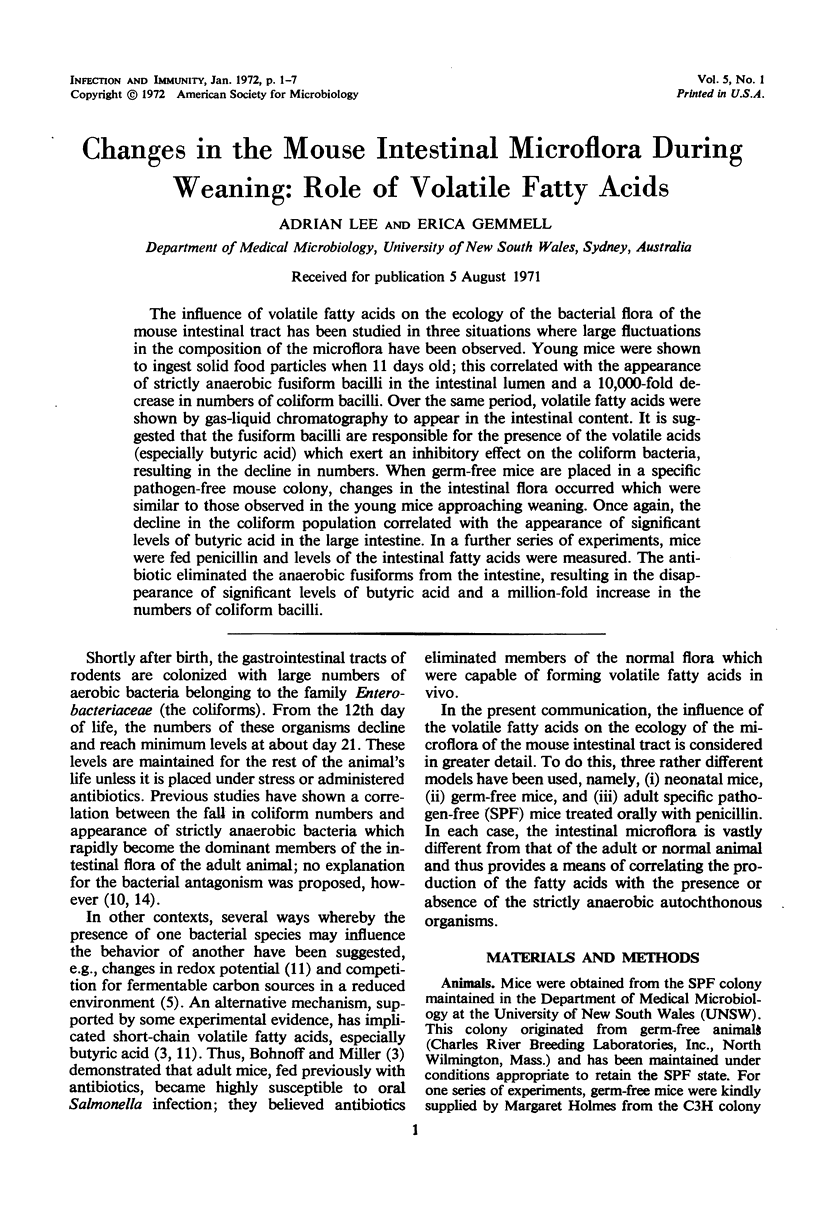
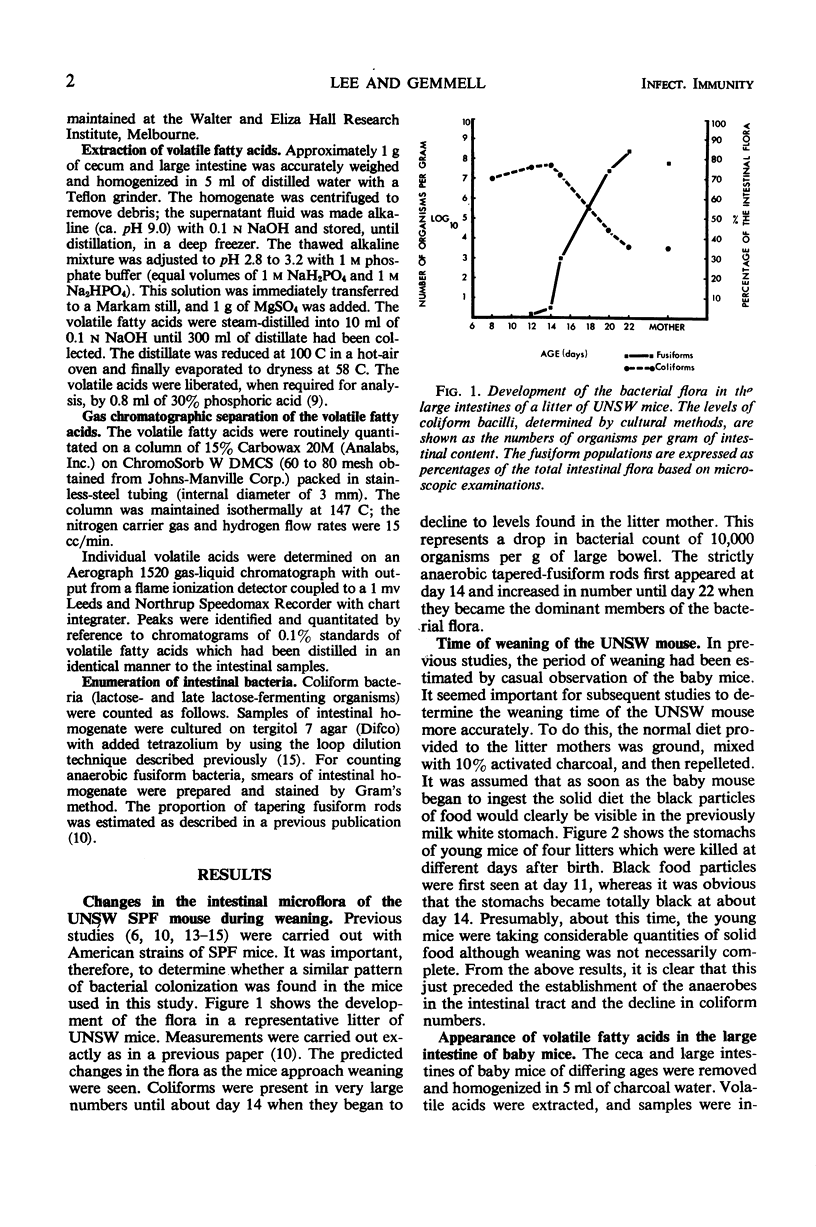
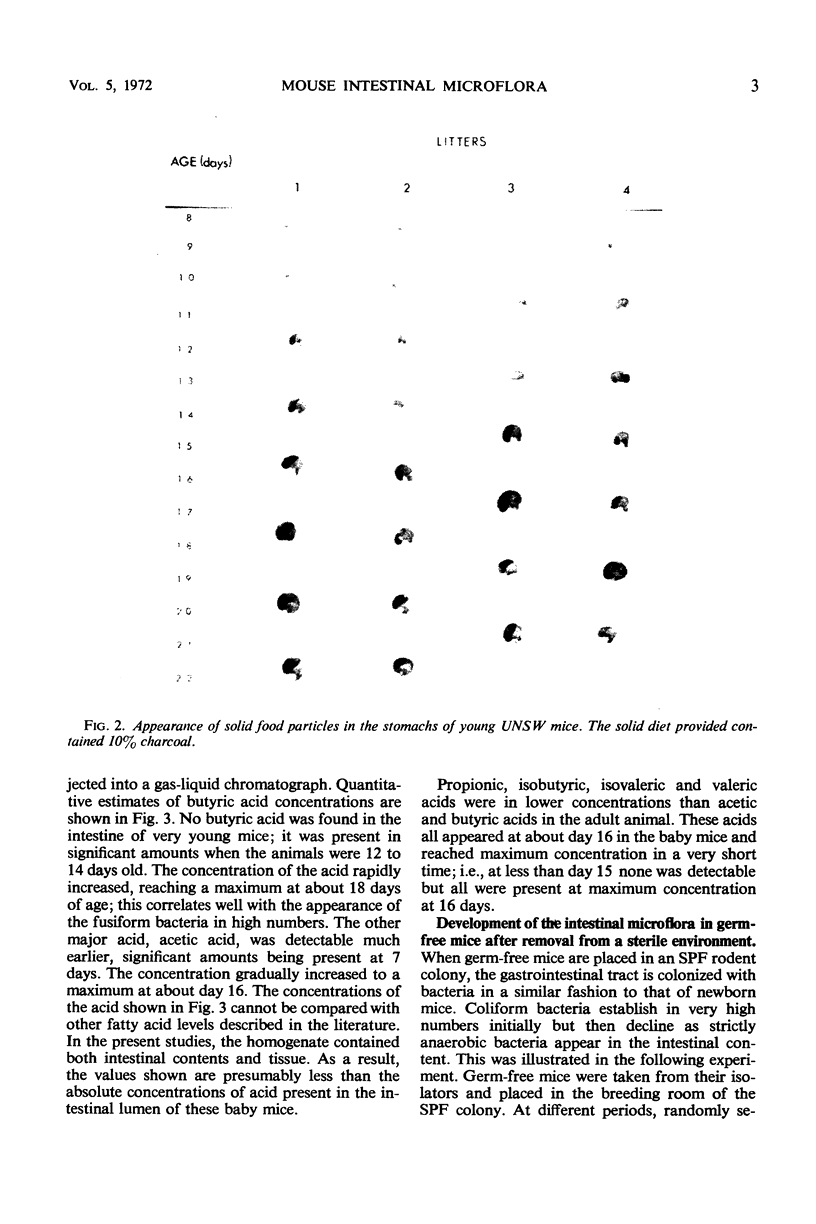
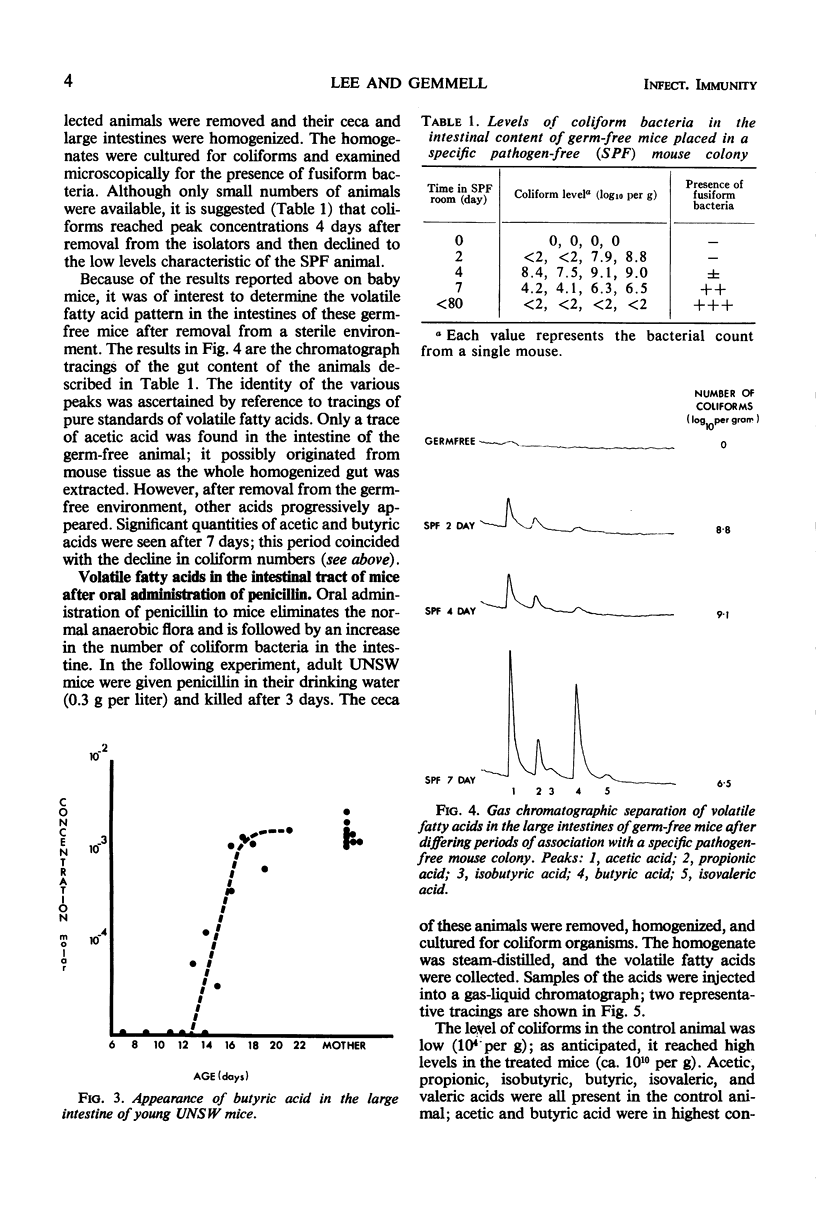

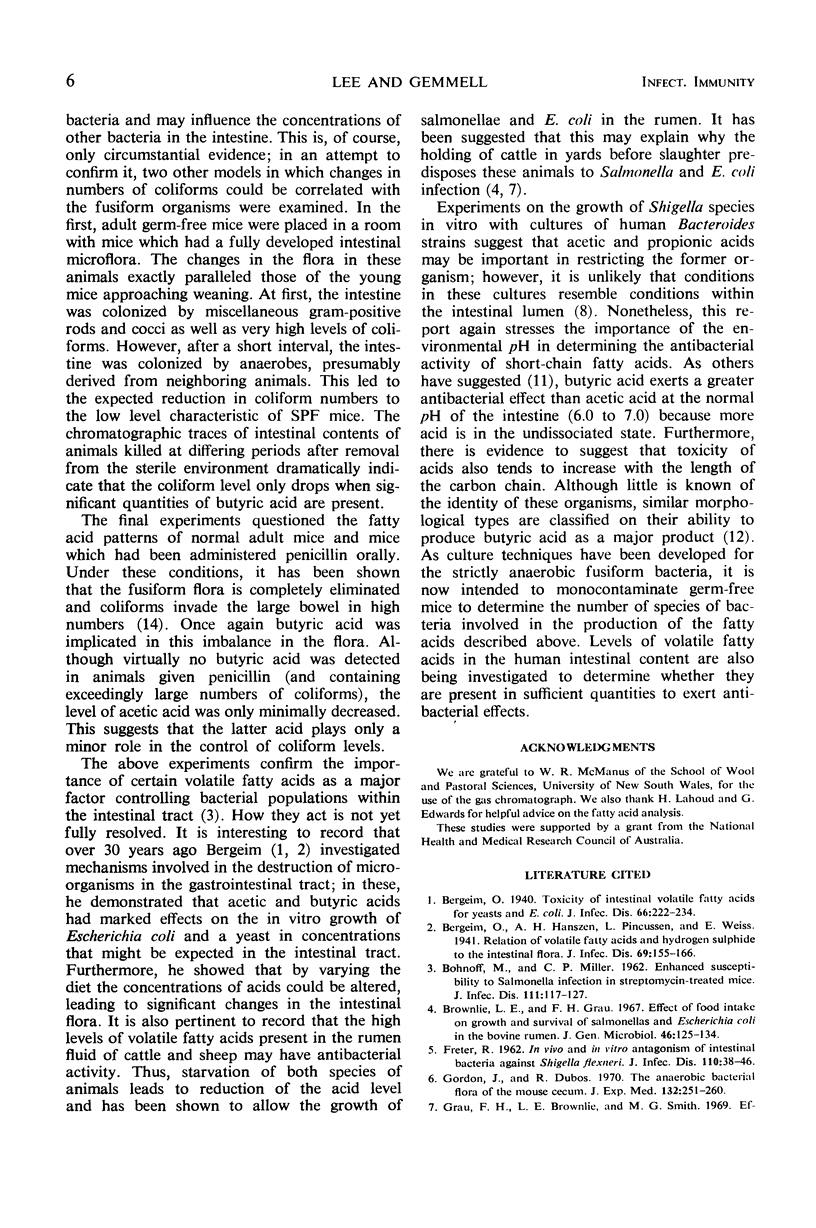
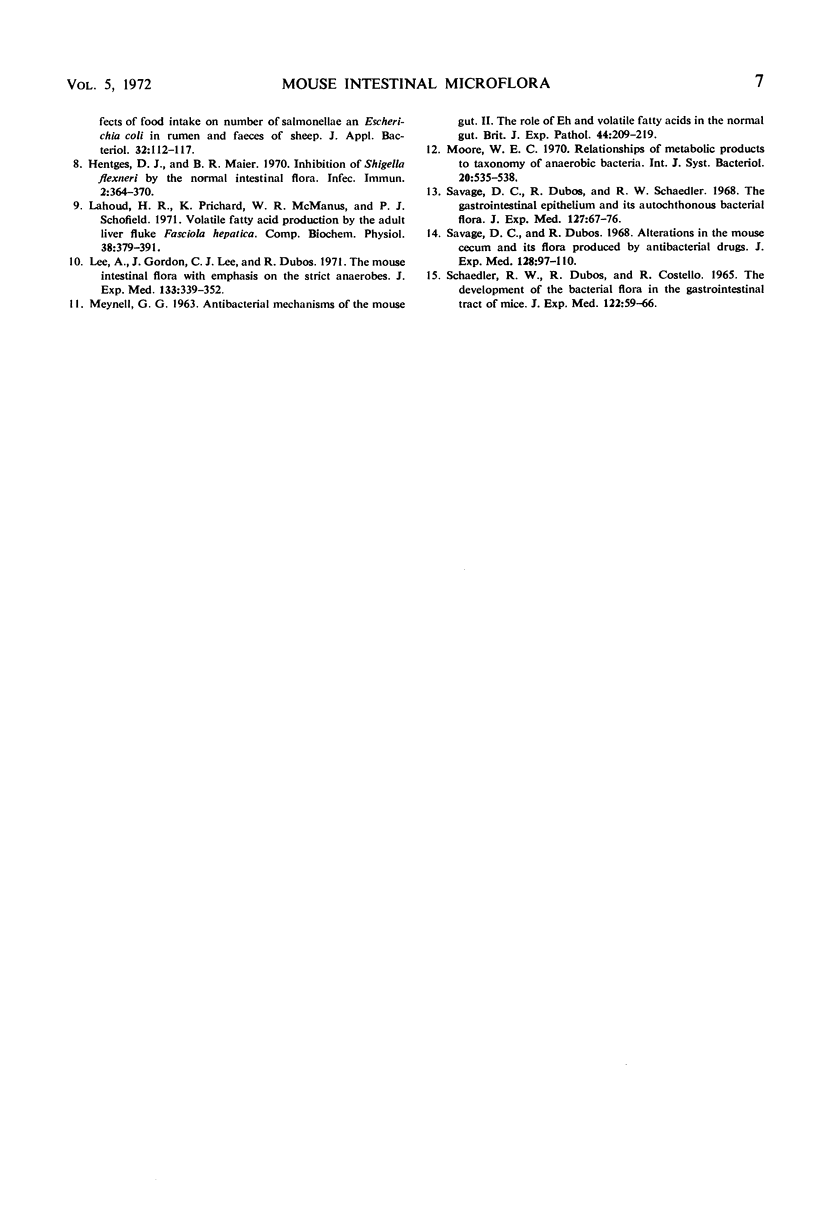
Images in this article
Selected References
These references are in PubMed. This may not be the complete list of references from this article.
- BOHNHOFF M., MILLER C. P. Enhanced susceptibility to Salmonella infection in streptomycin-treated mice. J Infect Dis. 1962 Sep-Oct;111:117–127. doi: 10.1093/infdis/111.2.117. [DOI] [PubMed] [Google Scholar]
- Brownlie L. E., Grau F. H. Effect of food intake on growth and survival of salmonellas and Escherichia coli in the bovine rumen. J Gen Microbiol. 1967 Jan;46(1):125–134. doi: 10.1099/00221287-46-1-125. [DOI] [PubMed] [Google Scholar]
- FRETER R. In vivo and in vitro antagonism of intestinal bacteria against Shigellaflexneri. II. The inhibitory mechanism. J Infect Dis. 1962 Jan-Feb;110:38–46. doi: 10.1093/infdis/110.1.38. [DOI] [PubMed] [Google Scholar]
- Gordon J. H., Dubos R. The anaerobic bacterial flora of the mouse cecum. J Exp Med. 1970 Aug 1;132(2):251–260. doi: 10.1084/jem.132.2.251. [DOI] [PMC free article] [PubMed] [Google Scholar]
- Grau F. H., Brownlie L. E., Smith M. G. Effects of food intake on numbers of salmonellae and Escherichia coli in rumen and faeces of sheep. J Appl Bacteriol. 1969 Mar;32(1):112–117. doi: 10.1111/j.1365-2672.1969.tb02195.x. [DOI] [PubMed] [Google Scholar]
- Hentges D. J., Maier B. R. Inhibition of Shigella flexneri by the Normal Intestinal Flora III. Interactions with Bacteroides fragilis Strains in Vitro. Infect Immun. 1970 Oct;2(4):364–370. doi: 10.1128/iai.2.4.364-370.1970. [DOI] [PMC free article] [PubMed] [Google Scholar]
- Lee A., Gordon J., Lee C. J., Dubos R. The mouse intestinal microflora with emphasis on the strict anaerobes. J Exp Med. 1971 Feb 1;133(2):339–352. doi: 10.1084/jem.133.2.339. [DOI] [PMC free article] [PubMed] [Google Scholar]
- MEYNELL G. G. Antibacterial mechanisms of the mouse gut. II. The role of Eh and volatile fatty acids in the normal gut. Br J Exp Pathol. 1963 Apr;44:209–219. [PMC free article] [PubMed] [Google Scholar]
- SCHAEDLER R. W., DUBOS R., COSTELLO R. THE DEVELOPMENT OF THE BACTERIAL FLORA IN THE GASTROINTESTINAL TRACT OF MICE. J Exp Med. 1965 Jul 1;122:59–66. doi: 10.1084/jem.122.1.59. [DOI] [PMC free article] [PubMed] [Google Scholar]
- Savage D. C., Dubos R. Alterations in the mouse cecum and its flora produced by antibacterial drugs. J Exp Med. 1968 Jul 1;128(1):97–110. doi: 10.1084/jem.128.1.97. [DOI] [PMC free article] [PubMed] [Google Scholar]
- Savage D. C., Dubos R., Schaedler R. W. The gastrointestinal epithelium and its autochthonous bacterial flora. J Exp Med. 1968 Jan 1;127(1):67–76. doi: 10.1084/jem.127.1.67. [DOI] [PMC free article] [PubMed] [Google Scholar]



